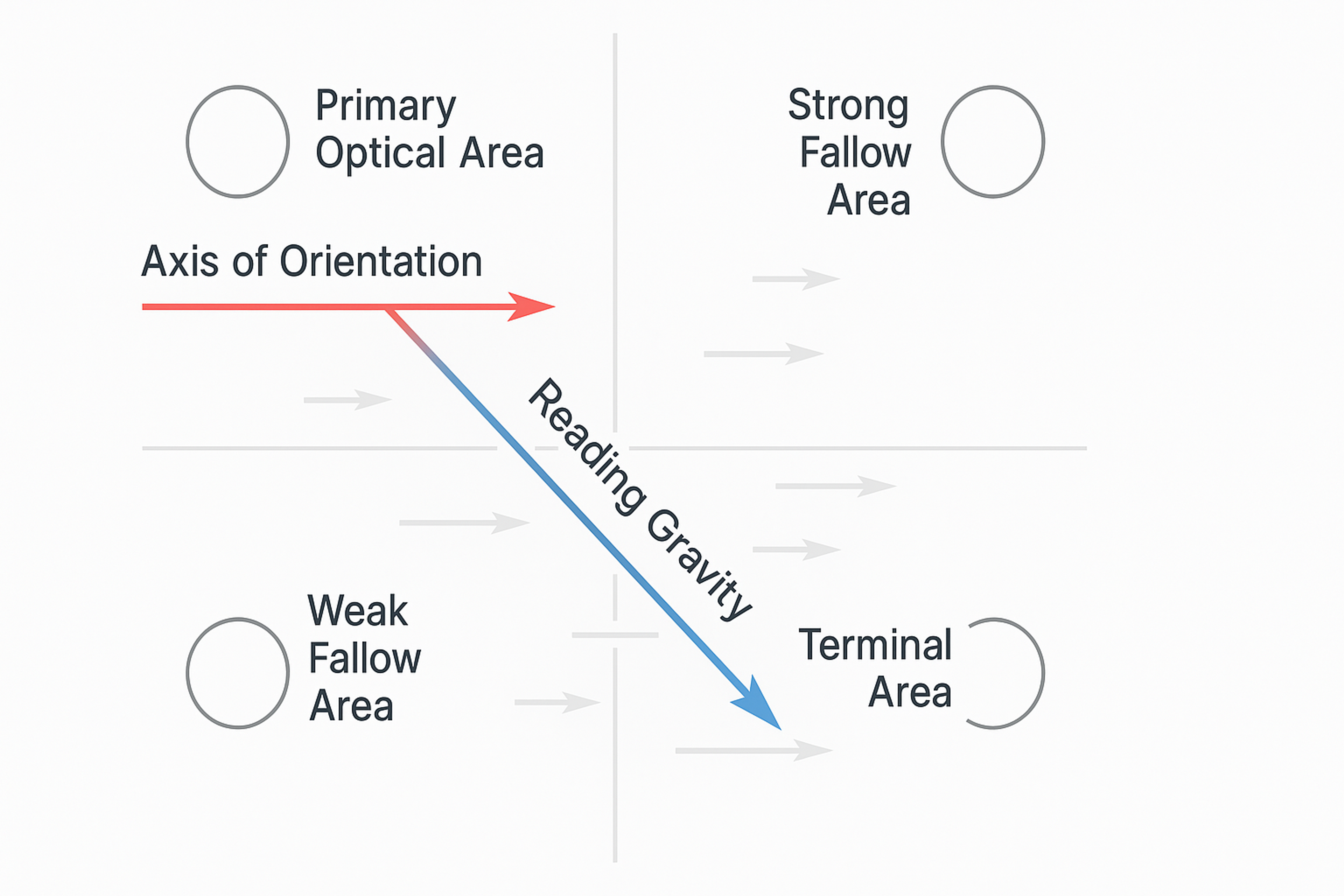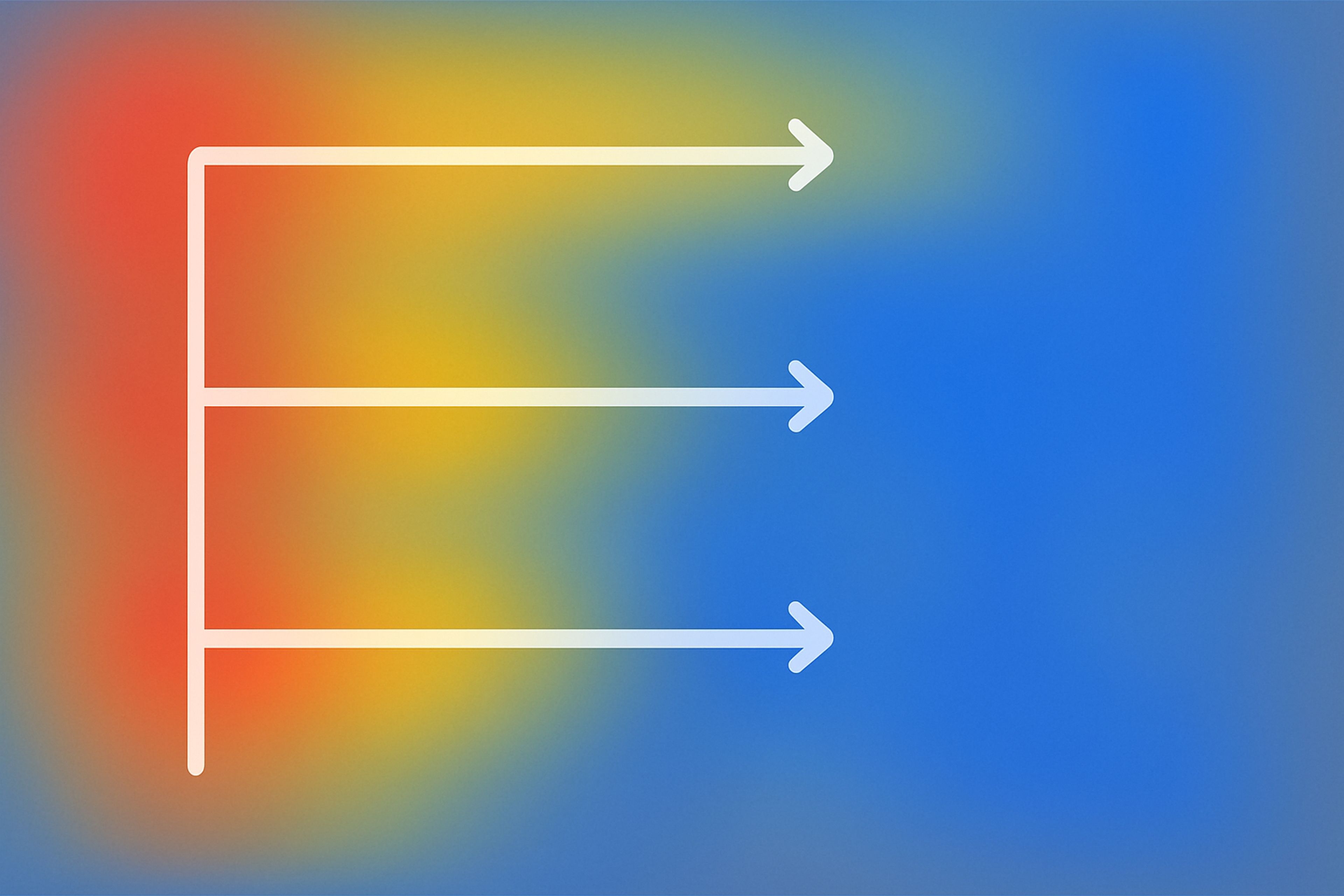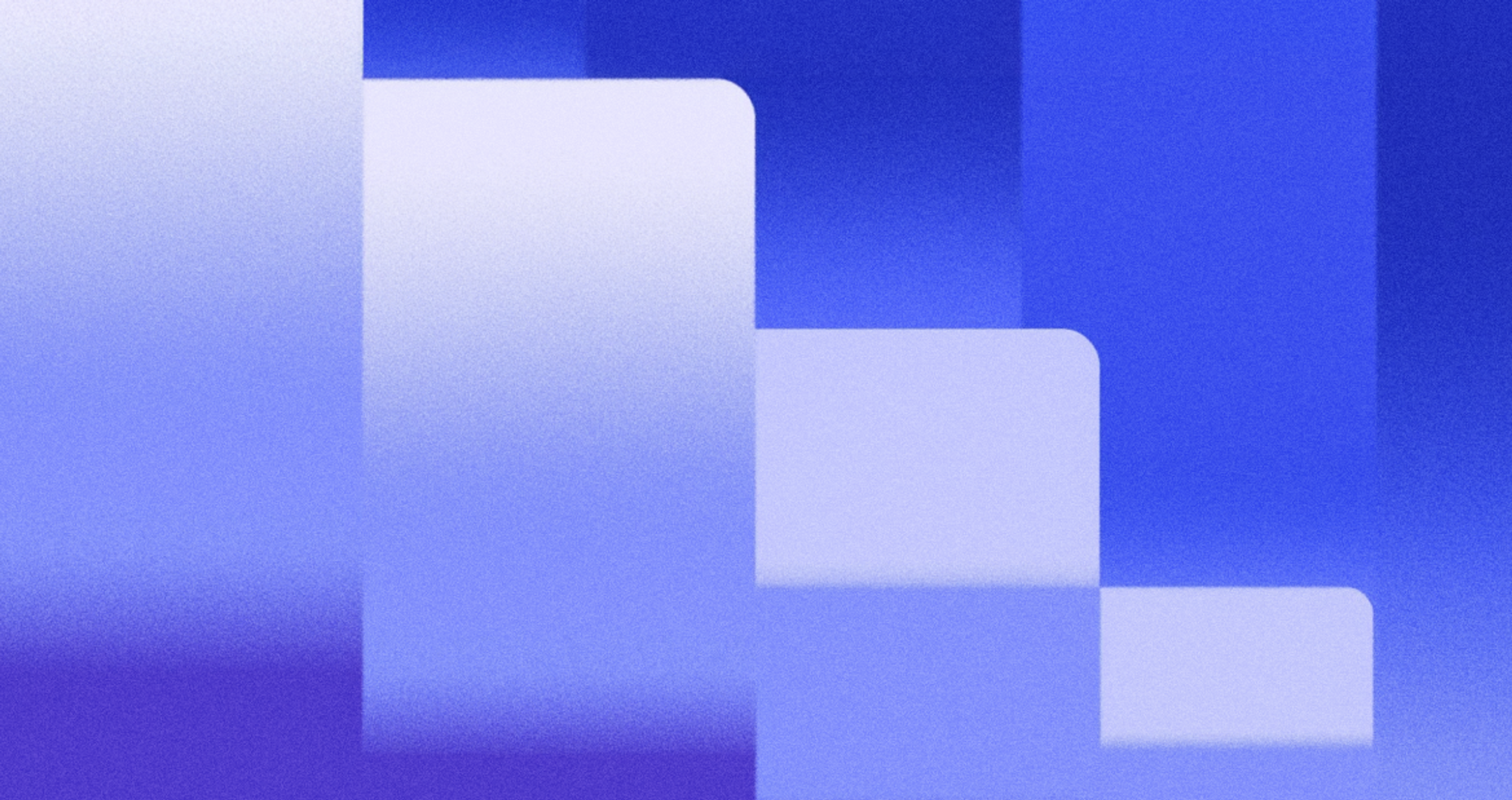Have you ever noticed how some websites grab your attention and keep you interested? Many use a smart layout called the F-shaped pattern.
This pattern follows how people read online — starting at the top left and moving across and down in an “F” shape. When websites use this layout, visitors find content faster and stay engaged.
By using the F-pattern, website owners can guide people to key information and turn visitors into customers.
In this article, you’ll learn what the F-pattern is, how it works, and how to use it to improve your site.
Key Takeaways
The F-pattern shows how users scan content — starting at the top left and moving down in an “F” shape.
Placing key content (headlines, keywords, CTAs) at the top and left grabs attention quickly.
Bold headings, short sentences, and visuals help guide the eye and improve readability.
This layout supports fast scanning and makes content easier to navigate.
Designing with the F-pattern boosts engagement, improves SEO, and increases conversions.
What Is F-shape?
The F-pattern is a common design layout that helps websites catch attention, keep visitors interested, and guide them to take action. It works by supporting three key behaviors: scanning, reading, and navigating.
Eye-tracking studies show that people often scan pages in an F shape. Their eyes start at the top left, then move across the page, then down. This pattern helps them find important content quickly.
Placing headlines and key information in the top left corner makes it more likely that users will notice it. After scanning, users begin to read more closely, moving down the page line by line.
F-Pattern

The F-pattern also supports easy navigation. It guides users through content in a way that feels natural and helps them find what they need without confusion.
Why Are The F-Shape Web Pages Effective?
The F pattern is a practical design structure because it helps website owners engage, capture, and convert their visitors into customers. Also it helps to create a beautiful and striking visual hierarchy. The F-shape encourages visitors to quickly scan for relevant information that has been placed in the top, left side-hand corner of the page.
The initial element forms the top bar of the 'F' shape, emphasizing the significance of this pattern in optimizing content layout to capture users' attention effectively.
This allows users to get an overview of the content quickly without spending too much time searching through all of it. Additionally, readers can spend more time reading further down the page if they find essential information and important elements.
Finally, navigation throughout the website is logical, ensuring users can quickly locate what they are looking for and that all information is easily accessible. As a result, businesses can use this powerful web design tool to create a better online experience for their visitors and ultimately increase conversions and drive revenue growth.
Key Elements of the F-Shaped Pattern
The F Pattern is a well-known user experience pattern used for many years to engage, capture, and convert website visitors into customers. It is designed to take advantage of the scanning behavior of most users when they first arrive at a page, which involves taking in the headline and subheadings along with the first few sentences.
This pattern requires understanding how people’s eyes naturally move across a page and how to use this motion to capture their attention. After the initial vertical scan down the left side of the screen, users often make a previous movement, shifting their focus to areas of interest.
Example of F-Shaped Pattern

The key elements of the F-Shaped Pattern are horizontal eye movement and scanning behavior, an emphasis on headlines, subheadings, and first sentences, and strong visual cues such as color, images, or icons. To leverage this pattern effectively, content should be organized to guide the horizontal movement of users’ eyes from left to right in an “F” shape, forming horizontal lines as they process the text more linearly.
The headline should be placed prominently at the top of the page, while subheadings should be used throughout the page with bold font or other strong visual cues. Additionally, short sentences that draw attention should be placed near the top of each section to capture users’ attention quickly.
When designing a website using this pattern, it is important to ensure all content is easily readable and scannable with clear headings for each section. Too little or no formatting much text can overwhelm readers, so it’s essential to consider what information you want them to take away after reading your content before writing it out in full.
Additionally, calls-to-action should be placed throughout the page with vibrant colors or unique icons that catch users’ eyes and compel them to click through.
By leveraging these key elements of the F-shaped pattern, businesses can create an engaging online experience that will capture their target audience’s interest and increase conversions on their site.
Using strong visual cues for headlines and subheadings along with shorter sentences near the top of each section will help guide visitors’ eyes across the page, while calls-to-action strategically placed throughout will encourage them to explore more deeply.
With this combination of design elements, businesses can create an optimal user experience for their visitors, resulting in more conversions over time.
Designing for the F-Shaped Pattern
Designing for the F pattern requires understanding how users scan a website and use their eyes to absorb information. By adhering to this pattern, businesses can ensure visitors take in the most essential information quickly and easily. This will help guide them through the page and increase user engagement with content.
Users typically scan heavy blocks of content using the 'F-Pattern', a visual pattern observed during an eye-tracking study. This pattern reflects a consistent reading behavior where users first read horizontally across the top, then scan vertically down the left side before making additional horizontal movements, demonstrating how layout influences attention and engagement.
When designing for the F-Shaped Pattern, optimizing content layout and structure is important to make it easy for readers to scan the page quickly.
Headlines should be placed prominently at the top of each section, while subheadings should be used throughout with bold font or other strong visual cues. Additionally, short sentences that draw attention should be placed near the top of each section to capture users’ attention quickly.
Reading Gravity

It is also important to use visual cues such as colors or icons throughout the page to guide readers’ attention toward key parts and important content elements. For example, you could use color to make headlines stand out or include icons next to calls to action to draw readers’ attention.
Additionally, including images where appropriate can help visually explain ideas and concepts while drawing users’ eyes across a page.
By leveraging these design elements and effectively optimizing content structure f layout, using the F Pattern that captures their target audience’s interest and increases conversions on their site.
With the thoughtful implementation of this user experience pattern, businesses can expect more engaged visitors who stay longer on their websites and are more likely to convert into paying customers over time.
Content Writing Techniques for a Scanning Pattern
Content writing techniques are essential for creating a practical online experience that leverages users scan patterns, particularly the F pattern. Crafting engaging headlines and subheadings is the first step in this process, as this will initially draw readers’ attention and guide them through the page.
Headlines should be concise, informative, and captivating to entice readers to keep reading. Additionally, it is important to incorporate keywords related to the page’s topic to increase its search engine visibility.
When leveraging the F pattern, the second step in content writing techniques is writing impactful opening sentences. This is where you should capture readers’ attention and make them want to continue exploring your website further.
Opening sentences should be short yet compelling, incorporating persuasive words or phrases to grab users’ attention quickly. Additionally, they should provide a brief overview of what visitors can expect from the page while providing just enough information to encourage them to keep reading.
Content Writing Tips

Furthermore, it is also important to ensure all content is easily readable and scannable, with clear headings for each section. Long blocks of text can overwhelm readers, so break up sections into smaller paragraphs with appropriate line spacing between them.
It is also helpful to include images when possible, as these can help visually explain ideas and concepts while drawing users’ eyes across a page.
By employing content writing techniques such as crafting engaging headlines and subheadings, impactful opening sentences, and strategically using visuals throughout a web page, businesses can create an optimal user experience for their website visitors that effectively leverages the F-shaped pattern.
This combination of design elements will help draw users’ attention across a page while increasing engagement with content, ultimately resulting in more conversions over time.
Mobile Responsiveness and the F Pattern
When designing for the F layout, it is essential to consider how your content will look on mobile devices. Mobile browsing has become increasingly popular as phones and tablets become increasingly advanced, so ensuring your website is optimized for these devices is essential for providing users with a positive experience.
One key way to optimize content for mobile devices is through responsive design. This ensures that viewers will see the same content regardless of the device they are using while still being able to interact with it effectively.
To do this, designers must consider font size and line length and how elements like images and menus will appear on different-sized screens. Additionally, links and buttons should be easily clickable on any device by allowing ample space between them to prevent accidental clicks or taps.
F-Pattern on a Heat Map

Moreover, when designing mobile devices in the F pattern, it is crucial to focus on usability. Content should be concise yet meaningful so readers can quickly scan and remove information from a page.
Additionally, icons or photos should be included where applicable, as this can help draw attention across the horizontal lines of a page and increase engagement with content.
By leveraging these best practices for mobile-friendly web content and design, businesses can create an optimal user experience that leverages the F layout while being accessible on various devices. With this combination of design elements, businesses can expect more engaged visitors who stay longer on their websites and are more likely to convert into paying customers over time.
Implications of the F-Shaped Pattern for SEO Based on Eye Tracking Studies
As a result of the F Shape reading pattern, UX is not the only element impacted. Your website's SEO performance is also affected.
If users spend most of their attention on the upper left corner of a page, the content that captures their attention the most, such as essential keywords, head titles, and CTAs, should be included in these areas.
This will improve engagement levels and visibility. This matching improves dwell time and decreases the bounce rate, two of the many metrics search engines use to rate pages.
Moreover, drawing users' attention using subheadings, bullet points, and words highlighted in bold improves the substantive content presentation, encouraging users to drill down deeper. As a result, users are left with higher interaction per page and deeper navigation into the site, which are all good for the search engines to see.
When you optimize your content around the F pattern, you enhance your users' journeys and give them friendly layouts that are perfect for SEO, which means happier users and search engines.
Tools and Metrics for Tracking Reading Pattern Effectiveness
To measure the effectiveness of F-shaped reading pattern optimization, using the right tools is essential. Heatmaps from platforms like Hotjar reveal where users focus their attention, helping you see if key content aligns with natural scanning behavior.
Google Analytics adds context with metrics like bounce rate and time on page, which indicate whether your layout keeps users engaged. For deeper insight, eye-tracking software in user testing can show exactly where and how long users look at different areas.
By combining these tools, you can fine-tune your design to ensure vital content appears where users are most likely to notice it — boosting engagement, usability, and SEO performance.
FAQ
Q: Is the F-pattern Effective for All Types of Websites?
No, the F-pattern works best for text-heavy pages like blogs, news articles, and landing pages. Visual or app-based interfaces may follow different scanning behaviors.
Q: How Does the F-pattern Compare to the Z-pattern?
The F-pattern is ideal for content-heavy layouts with multiple paragraphs and headings, while the Z-pattern suits simpler designs like single-page websites or ads with minimal text.
Q: Can the F-pattern be Applied to Video or Multimedia Content?
Not directly. The F-pattern applies to reading behavior. For multimedia, engagement depends more on placement, motion, and clear visual hierarchy than eye-scanning patterns.
Q: Should Designers Always Follow the F-pattern Strictly?
No. The F-pattern is a guideline, not a rule. Effective design considers user goals, content type, and context before choosing a layout structure.
Read more:
Conclusion
In conclusion, leveraging the F-shaped layout with content design and optimization can help businesses create an engaging online experience for their website visitors, increasing conversions over time.
By optimizing layout structure to make it easy to scan quickly, crafting compelling headlines and opening sentences, incorporating visual cues throughout a page, designing mobile-friendly content elements, and providing users with easily readable content, businesses can create an engaging page that leverages the F pattern.
By employing these design elements and content writing techniques, businesses can expect more engaged visitors who stay longer on their websites and are more likely to convert into paying customers over time.


About Clay
Clay is a UI/UX design & branding agency in San Francisco. We team up with startups and leading brands to create transformative digital experience. Clients: Facebook, Slack, Google, Amazon, Credit Karma, Zenefits, etc.
Learn more

About Clay
Clay is a UI/UX design & branding agency in San Francisco. We team up with startups and leading brands to create transformative digital experience. Clients: Facebook, Slack, Google, Amazon, Credit Karma, Zenefits, etc.
Learn more


